Resetting a Vivint panel is a crucial step for homeowners and security system users to troubleshoot technical issues, restore default settings, or prepare the panel for reinstallation. Vivint, a leading provider of smart home security solutions, offers users an intuitive process to reset their panels, ensuring seamless operation and reliability.
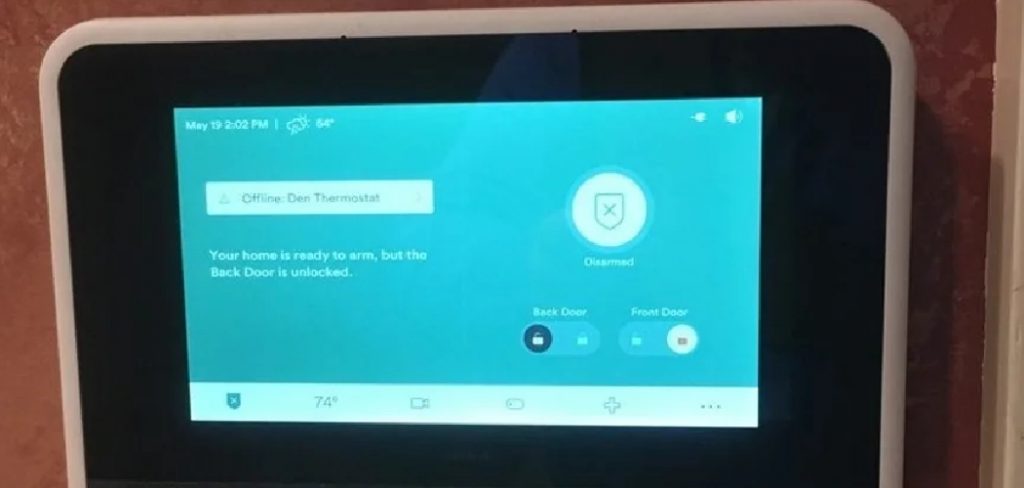
Whether you’re experiencing connectivity issues, updating system configurations, or troubleshooting sensor malfunctions, knowing how to reset your Vivint panel correctly is essential for maintaining the security and functionality of your home security setup.
In this comprehensive guide, we’ll explore the step-by-step process of how to reset vivint panel, covering various methods, considerations, and best practices to ensure a smooth and effective reset. By understanding these techniques, homeowners can confidently navigate the reset process and enjoy peace of mind knowing that their property is protected against potential threats.
Importance of Resetting the Panel
Resetting the Vivint panel plays a crucial role in ensuring the efficiency and reliability of your home security system. It acts as a first-aid measure for resolving a variety of issues without necessitating professional help, saving time and potentially reducing costs.
A reset can resolve problems such as connectivity issues, software glitches, or unresponsive controls, thereby restoring the system’s optimal performance.
Additionally, resetting the panel is vital when updating your system’s settings or configurations to reflect changes in your security needs. It ensures that all components of the system communicate effectively, maintaining the integrity and effectiveness of your home’s security.
By regularly resetting the Vivint panel, homeowners can also ensure that they are taking full advantage of the latest features and updates provided by Vivint, keeping their home security system up-to-date and functioning at its best.
Understanding Vivint Panel

The Vivint panel is the central hub of your home security system, operating as the brain that communicates and controls the various components of your setup. It’s designed with user-friendliness in mind, featuring a sleek, intuitive interface that allows homeowners to monitor and manage their security settings with ease.
The panel integrates seamlessly with a wide range of smart devices, including door and window sensors, motion detectors, cameras, and smart locks, providing holistic security solutions that can be tailored to meet individual needs. Its advanced technology supports wireless connectivity, enabling remote monitoring and control through the Vivint app, which means you can access and adjust your system from anywhere in the world.
Understanding how your Vivint panel works is key to maximizing the effectiveness of your home security system and ensuring you can leverage all the features it offers to keep your home safe.
Common Reasons for Needing a Reset
There are several scenarios where a reset of your Vivint panel might become necessary to maintain or restore the proper functioning of your home security system. Common reasons include:
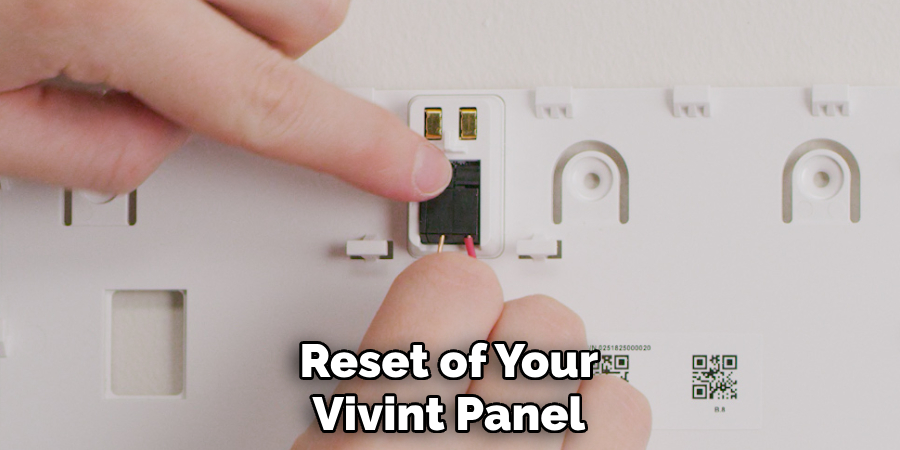
- Technical Glitches: Occasionally, like any sophisticated electronic device, the Vivint panel may encounter bugs or software glitches that disrupt normal operation. A reset can often clear these issues, returning the system to normal functionality.
- System Updates: When updating the system’s software or integrating new devices into your security setup, a reset may be required to ensure smooth operation and compatibility across all components.
- Connectivity Issues: Problems with Wi-Fi or cellular connections that affect the panel’s ability to communicate with Vivint’s monitoring center or with other smart devices in your home often necessitate a reset to re-establish a stable connection.
- User Errors: Incorrect settings or configurations made by the user, which could compromise the system’s efficiency or functionality, might require a reset to default settings to rectify such errors.
- Post-Installation Adjustments: After initial installation or adding new devices, a reset might be needed to calibrate the system accurately and ensure all components are functioning harmoniously.
Performing a reset for these reasons helps to ensure that your Vivint panel and, by extension, your entire home security system operates optimally, providing the best protection for your home and loved ones.
Safety Considerations
Before proceeding with the reset of your Vivint panel, it is essential to follow certain safety considerations to prevent any damage to the panel and ensure your security system remains effective post-reset. Firstly, ensure that your system is disarmed to avoid triggering false alarms that could alert your local emergency services unnecessarily.
Also, notifying Vivint’s customer support before starting the reset process is highly recommended. This way, they can be aware of your actions and provide assistance if needed, and also ensure that the reset process does not inadvertently signal an emergency situation to their monitoring centers.
It’s also critical to check that the power supply to your panel is stable before initiating a reset. A fluctuating or unreliable power source could interrupt the reset process, potentially corrupting the system software and leading to more significant issues than the ones you’re trying to solve.
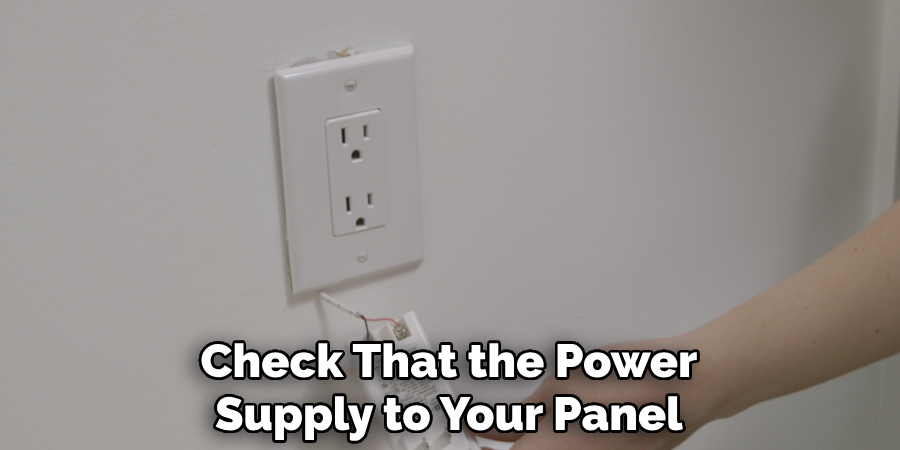
Lastly, consider the security settings and configurations that you may have personalized on your panel; make a record of these as they will likely be returned to default settings after a reset. By keeping these safety considerations in mind, you can ensure a safe and successful reset of your Vivint panel, maintaining the integrity and efficiency of your home security system.
Gathering Necessary Information and Materials
Before initiating the reset process on your Vivint panel, it’s important to gather all necessary information and materials to ensure a smooth and effective reset. Begin by locating the user manual for your Vivint system, which contains specific instructions for model-specific reset procedures. If the manual is not readily available, Vivint’s official website offers digital copies and additional resources that might be helpful.
Next, prepare a list of all connected devices within your security setup. This includes sensors, cameras, smart locks, and any other components that interact with the Vivint panel. Documenting these connections will be invaluable when reconfiguring your system after the reset.
Ensure you have access to your Vivint account details, including your login credentials for the Vivint app. These details are essential for monitoring the panel’s status remotely and making adjustments after the reset process.
Additionally, gather any tools that might be needed to physically interact with the panel, such as screwdrivers, in case you need to remove the panel from its mounting. However, in most cases, the reset can be performed directly through the panel’s interface without the need for tools.
Lastly, keep a notebook or digital notepad handy to jot down any important settings or configurations currently in use. These notes will assist in restoring your system’s personalized settings once the reset is completed. By preparing these materials and information in advance, you can ensure a more efficient and less disruptive reset process.
10 Methods How to Reset Vivint Panel
1. Soft Reset:
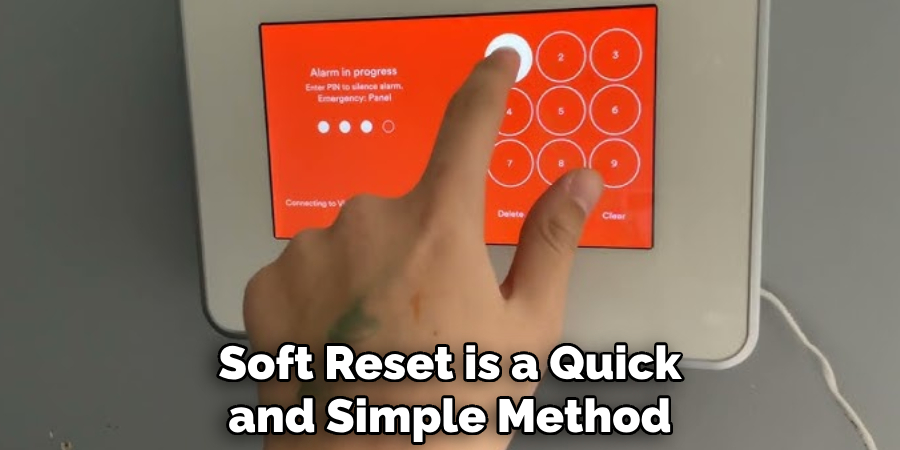
A soft reset is a quick and simple method to restart the Vivint panel without erasing any user settings or configurations. To perform a soft reset, locate the power button on the panel and press and hold it for about ten seconds.
Release the button once the panel powers off, and then wait a few seconds before powering it back on. This method can help resolve minor technical issues without affecting your system settings.
2. Factory Reset from Panel Menu:
If you’re experiencing significant issues or want to restore the Vivint panel to its factory default settings, you can perform a factory reset from the panel menu. Begin by accessing the settings menu on the panel’s touchscreen interface. Navigate to the “System” or “Settings” section and look for the option to perform a factory reset. Follow the on-screen prompts to confirm the reset and initiate the process.
After the factory reset is complete, your panel will restart and all settings and configurations will be erased. This means that any programming you have done on the panel, such as adding devices or customizing settings, will need to be redone. However, this can often solve persistent issues and give you a fresh start with your Vivint system.
3. Master Reset via Installer Code:
Another method to perform a factory reset on the Vivint panel is by using the installer code. The installer code is a unique code provided by the installer or system administrator. Access the installer menu on the panel by entering the installer code followed by the command for a factory reset.
Follow the on-screen prompts to confirm the reset and initiate the process. This method is useful when the panel is not responding to the regular reset method or if you need to make changes to the system settings.
It’s important to note that performing a master reset will erase all user codes, sensor configurations, and system settings. After resetting the panel, you will need to reprogram any devices and customize your system according to your preferences. Make sure to have all necessary information, such as sensor names and codes, before initiating the reset.
Additionally, if you are not familiar with the installer code or unsure of how to access the installer menu, it’s best to contact your system administrator for assistance.
4. Power Cycle the Panel:
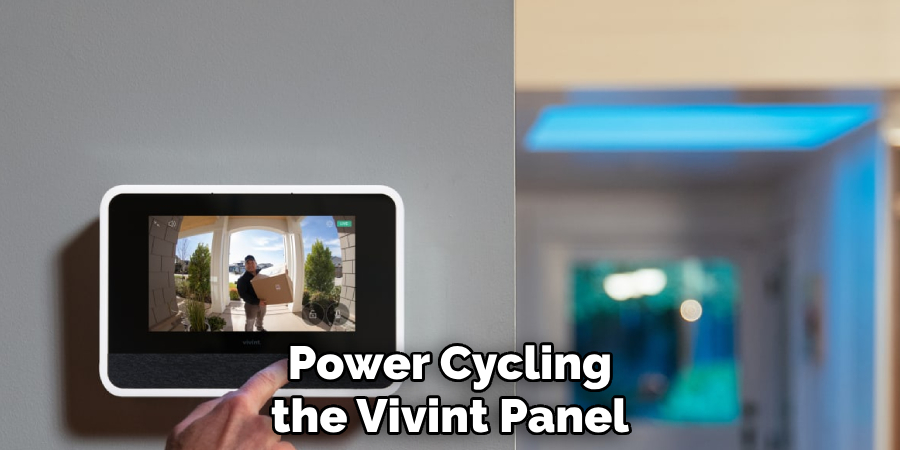
Power cycling the Vivint panel involves disconnecting it from its power source temporarily to clear any temporary data or glitches. Start by powering off the panel and disconnecting it from its power supply, either by unplugging it from the wall outlet or removing its batteries if it’s a wireless panel.
Wait for a few minutes before reconnecting the power source and powering the panel back on. This process is often recommended as a first step in troubleshooting any issues with the panel or its connected devices.
There are several reasons why power cycling may be necessary for the Vivint panel. One reason could be if the panel is frozen or unresponsive, which can happen due to temporary software glitches or conflicts. Power cycling can also help resolve issues with connecting to the internet, as it allows the panel to reset its network connection and re-establish it.
Additionally, power cycling can help with battery drainage issues on wireless panels, as it gives the batteries a chance to fully recharge without any devices drawing power.
5. Remote Reset via Vivint App:
If your Vivint panel is connected to the Vivint app, you may be able to initiate a remote reset using the app’s interface. Open the Vivint app on your smartphone or tablet and navigate to the panel settings.
Look for the option to perform a remote reset and follow the on-screen prompts to initiate the process. This method allows you to reset the panel from anywhere with an internet connection.
6. Hard Reset with Key Combination:
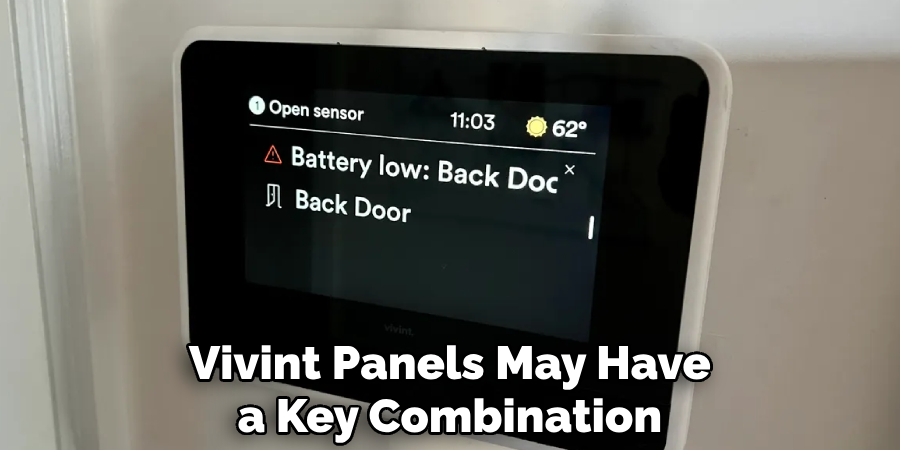
Some Vivint panels may have a key combination that allows you to perform a hard reset. Refer to the panel’s user manual or contact Vivint customer support to obtain the specific key combination for your panel model. Once you have the key combination, follow the instructions to perform a hard reset, which typically involves pressing and holding specific keys simultaneously.
This method should only be used as a last resort, as it can potentially erase all settings and data on the panel. It is recommended to try other troubleshooting steps before resorting to a hard reset.
7. Reset Using Installer Toolbox:
If you have access to the Vivint installer toolbox or programming software, you can perform advanced functions, including resets and diagnostics. Access the installer toolbox or programming software on a compatible device, such as a computer or tablet, and connect to the Vivint panel using the appropriate interface.
Follow the on-screen prompts or consult the documentation for instructions on performing a reset using the installer toolbox.
The installer toolbox is a powerful tool that allows for advanced customization and troubleshooting of the Vivint panel. In addition to performing resets, it also allows for diagnostics and firmware updates. This can be especially helpful if you encounter any issues with your panel or need to make changes to its settings.
8. Perform Remote Diagnostics:
Vivint customer support may be able to perform remote diagnostics on your panel to identify and resolve any issues remotely. Contact Vivint customer support and provide them with detailed information about the issues you’re experiencing with your panel.
They may be able to initiate a remote diagnostic session to troubleshoot the problem and recommend a solution. This service is especially useful for customers who are unable to troubleshoot the issue on their own or are located far from a Vivint technician.
Remote diagnostics is a useful service offered by Vivint customer support to help resolve issues with your panel. By providing detailed information about the issue, you can save time and effort by having a trained professional remotely diagnose and troubleshoot the problem for you.
This can be particularly helpful if you are not familiar with troubleshooting or if you live in an area where access to a Vivint technician is limited.
9. Update Firmware and Software:

Check for firmware updates or software patches for your Vivint panel and associated devices. Updating the firmware and software to the latest versions can resolve compatibility issues, improve performance, and address known bugs or vulnerabilities.
Follow the manufacturer’s instructions for downloading and installing updates. You may also be able to set automatic updates for your devices, so they are always running on the latest version.
If you have any third-party devices connected to your Vivint system, such as smart thermostats or cameras, make sure to also check for firmware updates or software patches from those manufacturers. Keeping all of your devices up-to-date can help ensure a smooth and secure operation of your Vivint system.
10. Contact Vivint Technical Support:
If you’re unable to reset the Vivint panel using any of the above methods or if you encounter any issues during the reset process, contact Vivint’s technical support for assistance. Provide them with detailed information about the issue you’re experiencing, including any error messages or symptoms, for prompt troubleshooting and resolution.
If you’re a Vivint customer, you can contact technical support by phone at 1-800-216-5232 or by logging into your online account and submitting a support ticket. You can also access live chat support through the Vivint website. Technical support is available 24/7 for assistance with any technical issues.
Conclusion
In conclusion, mastering the process of resetting a Vivint panel is essential for homeowners to ensure the continued functionality and security of their smart home systems. By following the comprehensive guide outlined in this article, users can confidently navigate the various reset options available, including soft resets, hard resets, and factory resets.
Proper preparation and caution are necessary to ensure that important data is backed up, and safety considerations are taken into account. Regular testing and troubleshooting help ensure that the panel functions optimally after the reset, providing users with peace of mind and reliable control over their smart home devices.
Hopefully, this article gave you some helpful tips about how to reset vivint panel successfully, so now that you have the proper knowledge on how to get the job done, why not give it a try today?

